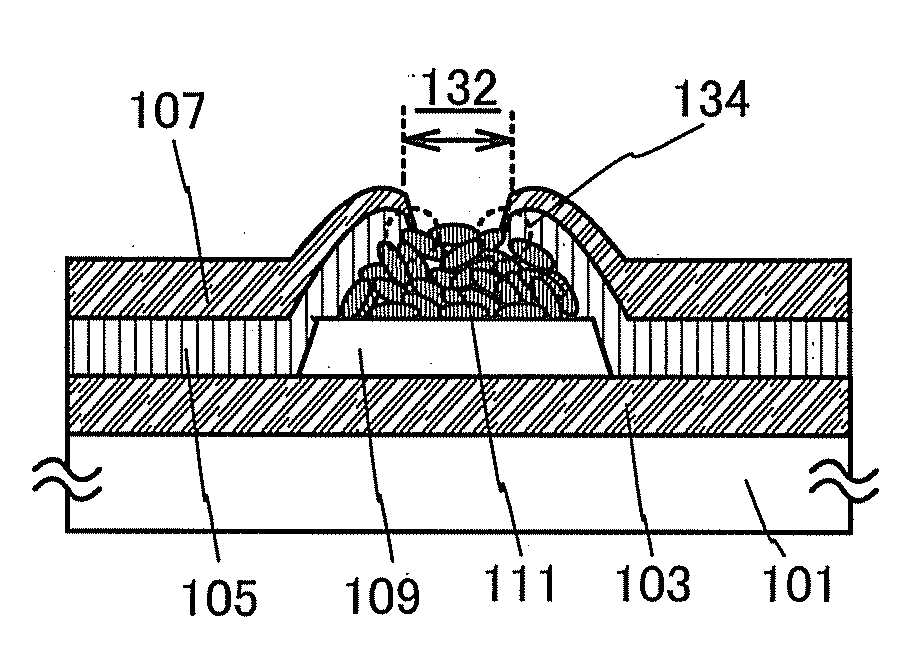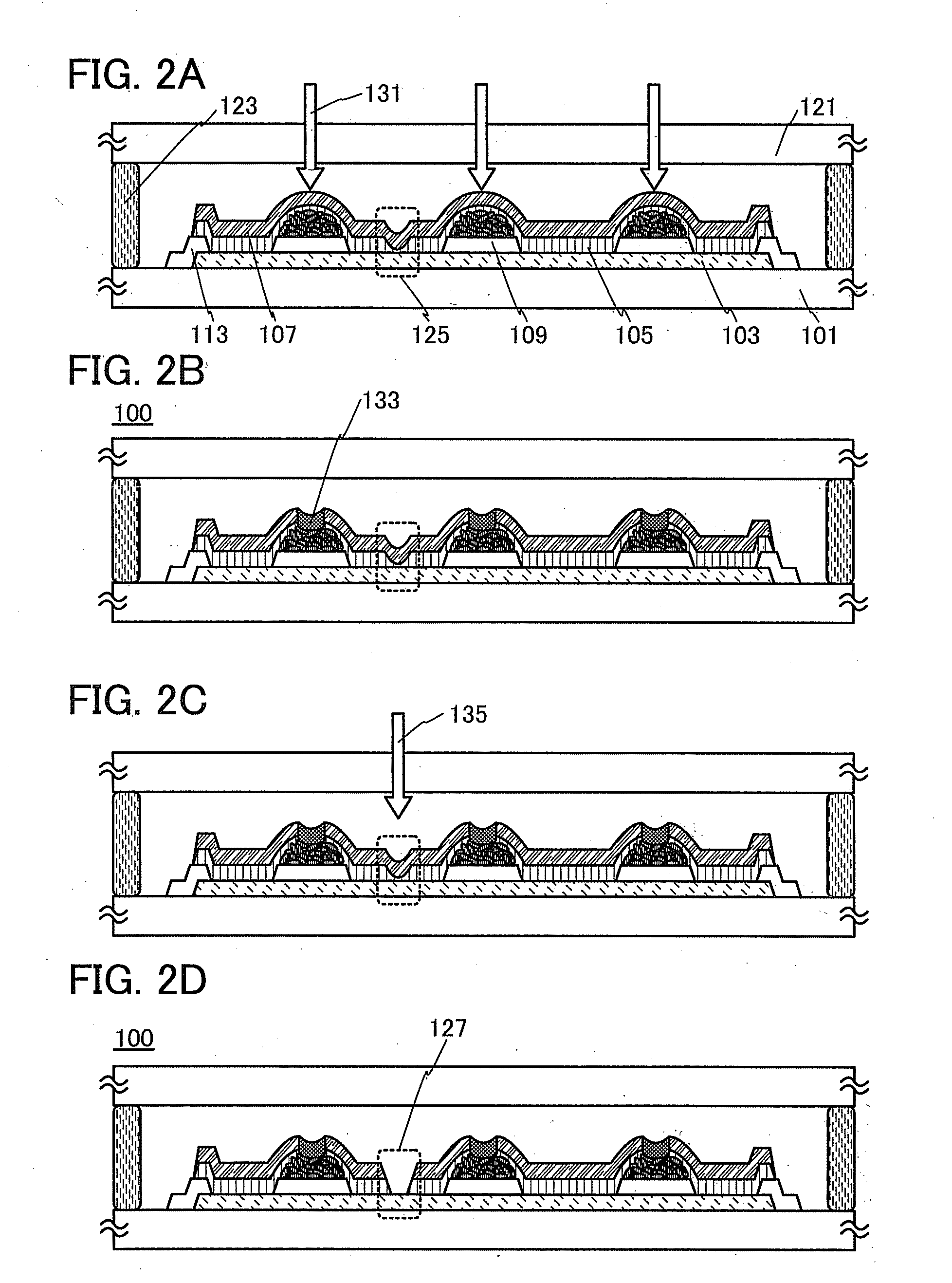Method of Manufacturing Light-Emitting Device and Light-Emitting Device
a technology of light-emitting devices and manufacturing methods, which is applied in the direction of organic semiconductor devices, solid-state devices, thermoelectric devices, etc., can solve the problems of thermal or physical damage to the light-emitting element, the problem of affecting the light-emitting element, and the visible gradient of the luminance, so as to achieve high-reliable light-emitting devices, prevent metal mask problems, and ensure the effect of light-emitting devices
- Summary
- Abstract
- Description
- Claims
- Application Information
AI Technical Summary
Benefits of technology
Problems solved by technology
Method used
Image
Examples
embodiment 1
[0053]In this embodiment, an example of a method of manufacturing a light-emitting device according to one embodiment of the present invention will be described with reference to FIGS. 1A to 1D, FIGS. 2A to 2D, FIGS. 3A and 3B, FIG. 4, and FIG. 5.
[0054]First, a substrate 101 is prepared. A lower electrode layer 103, an insulating layer 109, and an insulating layer 113 are formed over the substrate 101 (see FIG. 1A).
[0055]The lower electrode layer 103 can be Ruined in such a manner that a conductive film is formed by a film formation method such as a sputtering method, and then an unnecessary portion is removed by a patterning method such as a photolithography method.
[0056]The insulating layer 109 is provided for electrically insulating a connection electrode layer 111 formed later from the lower electrode layer 103. The insulating layer 109 can be formed by a sputtering method, a CVD method, a printing method (including a screen printing method and an offset printing method), or an ...
embodiment 2
[0144]In this embodiment, an example of a method of manufacturing a light-emitting device, which is different from that in Embodiment 1, will be described with reference to FIGS. 6A to 6D and FIG. 7. Note that the description that overlaps with that in Embodiment 1 is omitted or is simply given.
[0145]First, the lower electrode layer 103, the insulating layers 109 and 113, the connection electrode layer 111, the EL layer 105, and the upper electrode layer 107 are formed in this order over the substrate 101 as in Embodiment 1 (see FIG. 6A). Here, it is assumed that the region 125 in which the EL layer 105 is locally thin is formed.
[0146]Then, a region overlapping with the connection electrode layer 111 is irradiated with the laser light 131, so that the connection electrode layer 111 is electrically connected to the upper electrode layer 107. Irradiation with the laser light 131 may be performed by the method described in Embodiment 1.
[0147]Here, in this embodiment, a step of connecti...
embodiment 3
[0166]In this embodiment, application examples of the connection electrode layer described in the above embodiments will be described with reference to FIGS. 8A and 8B.
1>
[0167]FIG. 8A illustrates an example in which the connection electrode layer 111 is used in a dual-emission light-emitting device.
[0168]The light-emitting device illustrated in FIG. 8A includes, over the substrate 101, a lower electrode layer 163, an auxiliary electrode layer 165, an insulating layer 167, the connection electrode layer 111 having the connection portion 133, the EL layer 105, and the upper electrode layer 107.
[0169]Here, the lower electrode layer 163 has a light-transmitting property with respect to light emitted from the EL layer 105 as in the case of the upper electrode layer 107. Therefore, light emitted from the EL layer 105 is extracted from both the substrate 101 side and the surface side of the substrate 101.
[0170]Further, the auxiliary electrode layer 165 is provided in contact with the lower...
PUM
 Login to View More
Login to View More Abstract
Description
Claims
Application Information
 Login to View More
Login to View More - R&D
- Intellectual Property
- Life Sciences
- Materials
- Tech Scout
- Unparalleled Data Quality
- Higher Quality Content
- 60% Fewer Hallucinations
Browse by: Latest US Patents, China's latest patents, Technical Efficacy Thesaurus, Application Domain, Technology Topic, Popular Technical Reports.
© 2025 PatSnap. All rights reserved.Legal|Privacy policy|Modern Slavery Act Transparency Statement|Sitemap|About US| Contact US: help@patsnap.com



